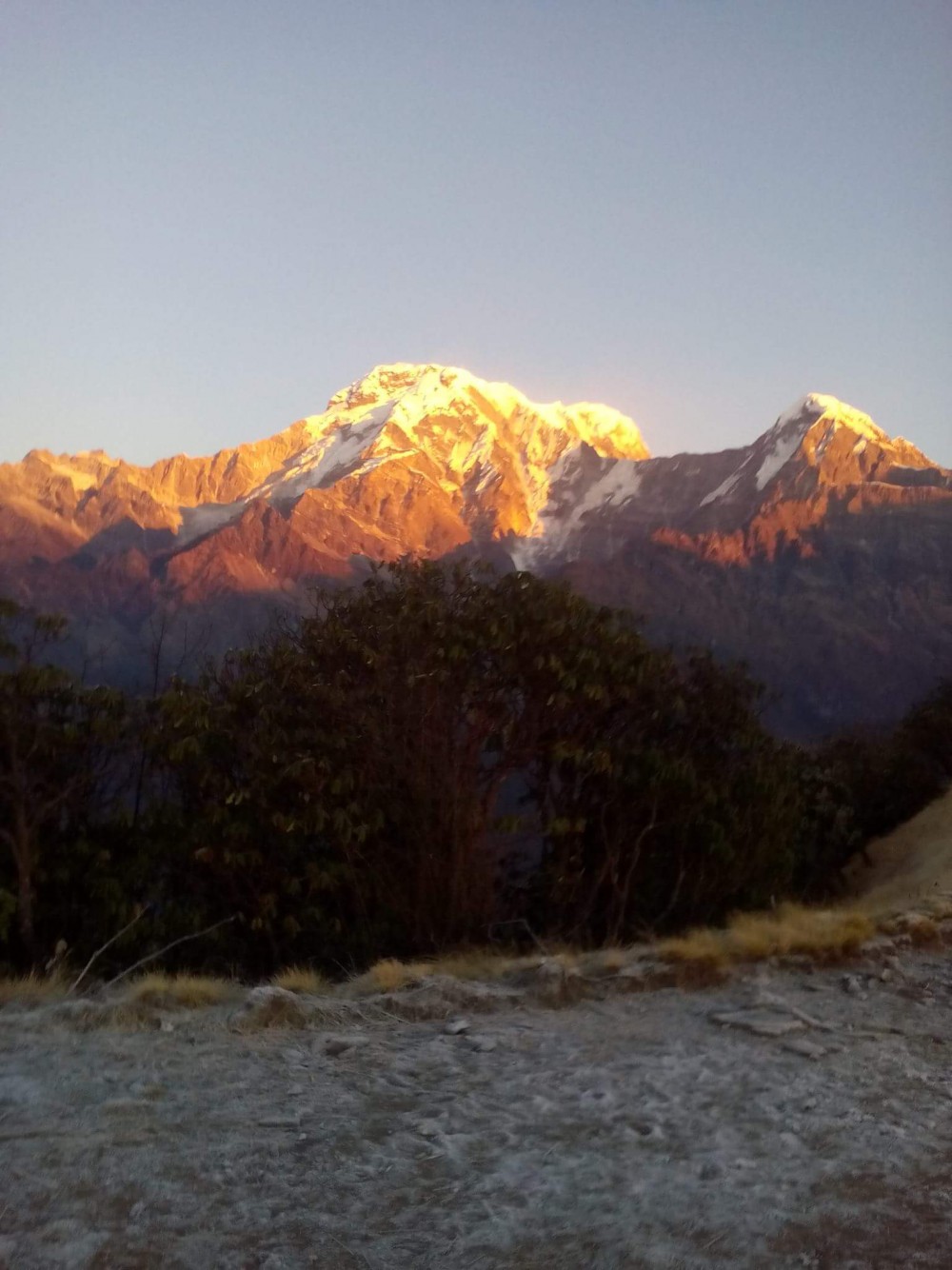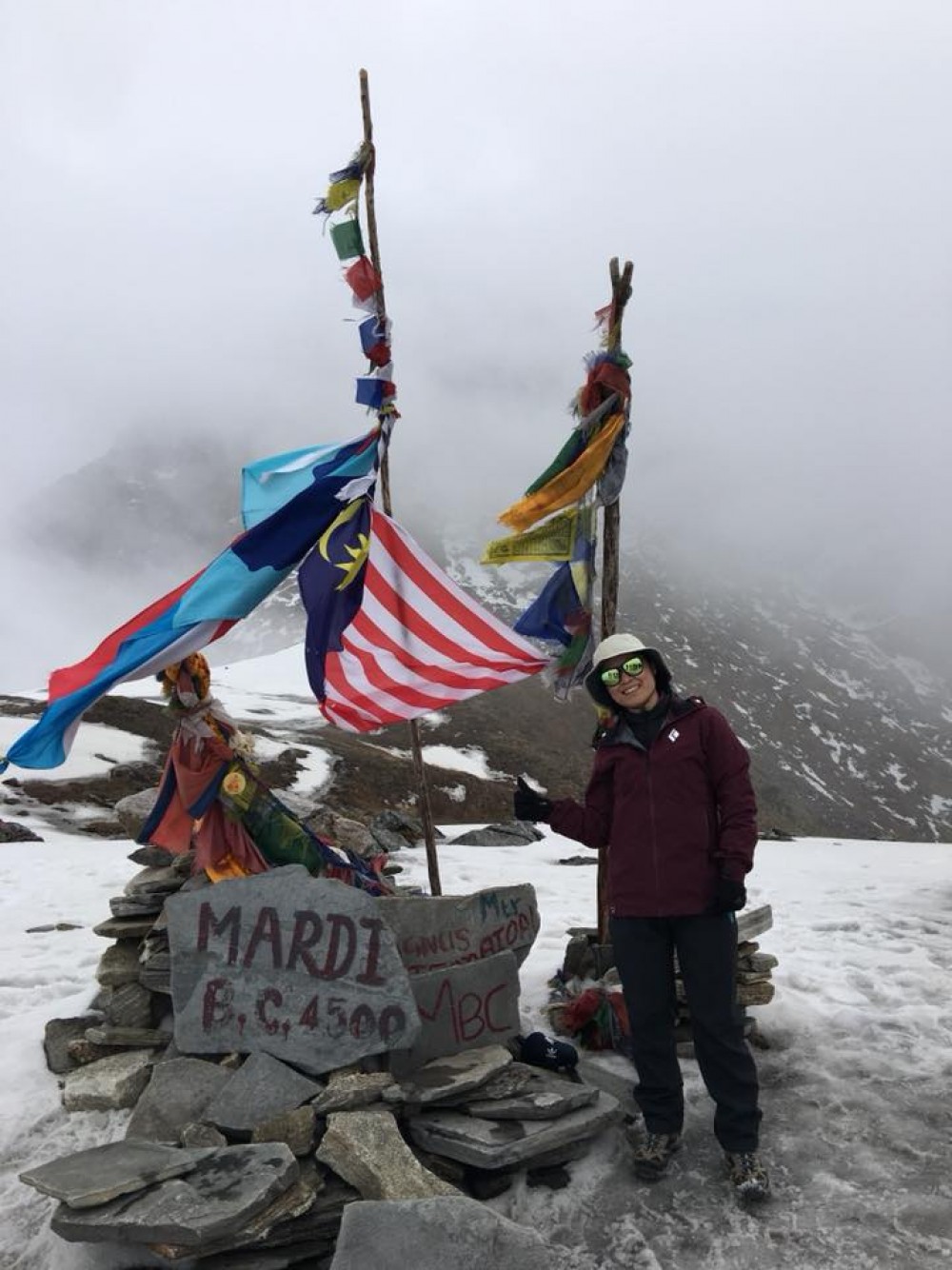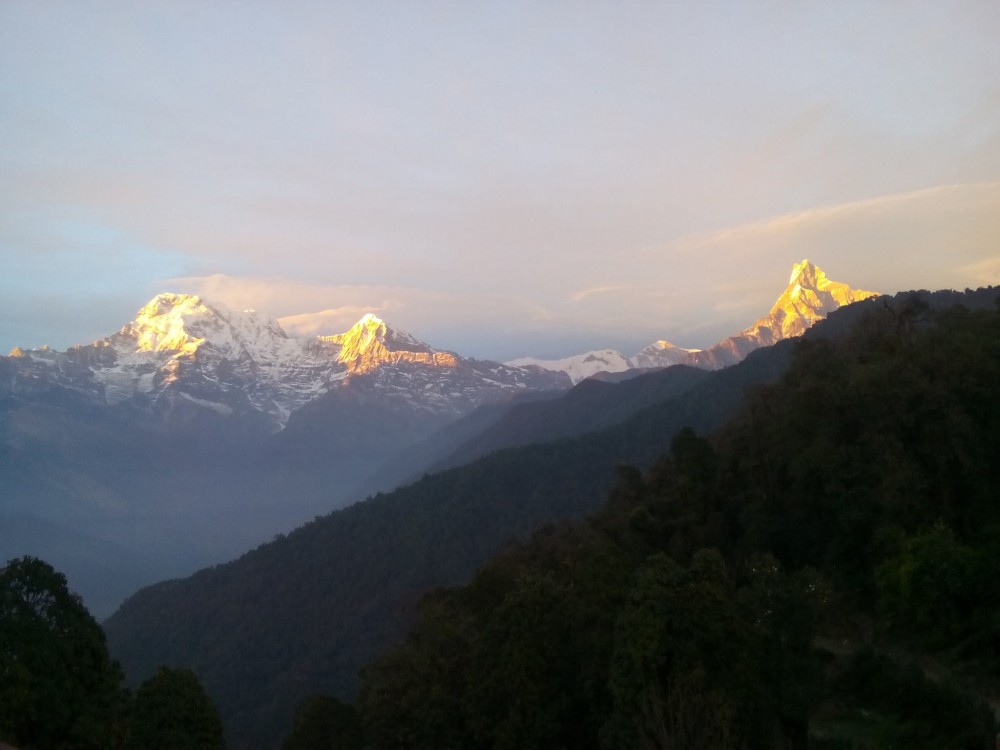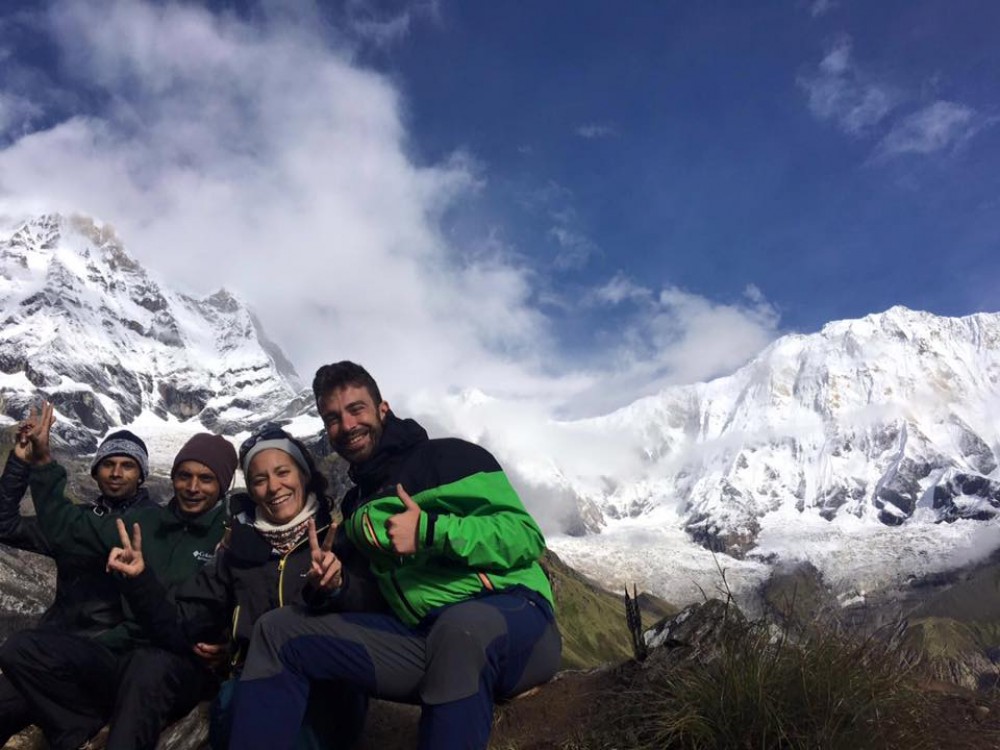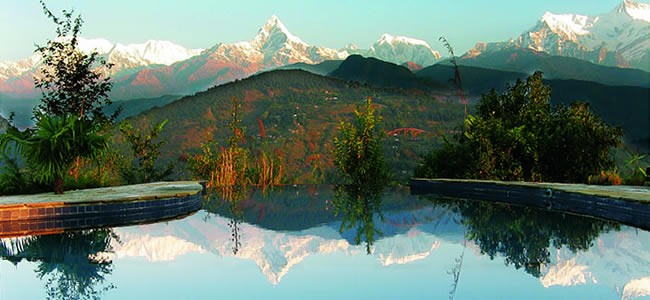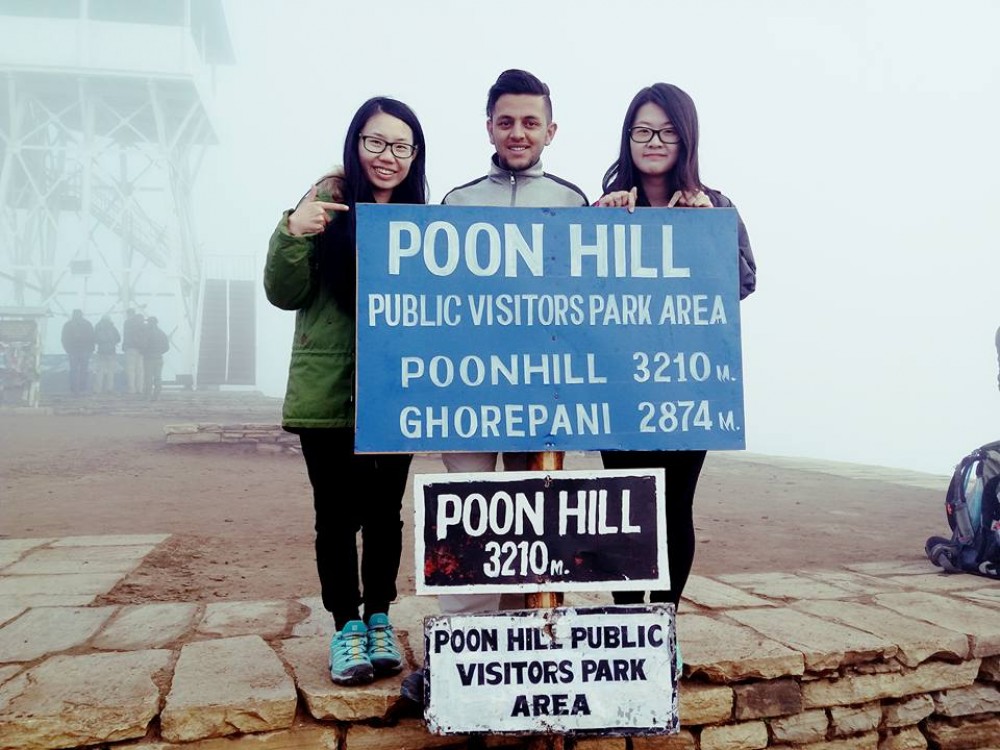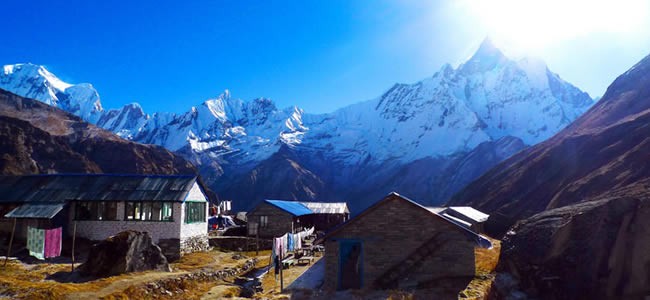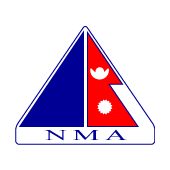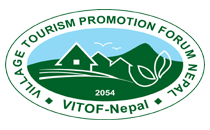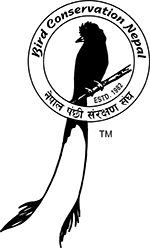Overview of Mardi Himal Trek
7 days Mardi Himal trek is one of the shortest treks to the mountains. This trek takes you to one of the hidden gems of Annapurna Region within just 7 days. The 7 days walk in the pristine natural beauty of Annapurna Region with magnificent views of green hills and snow capped mountains takes you to the base camp of Mardi Himal. Mardi Himal trek gives overwhelming trekking experiences to the trekkers. This trek is a newly discovered trial and can be a great idea to escape from the crowds of other popular destinations of Annapurna region since Mardi Himal Trek is not very popular among the trekkers.
What is Mardi Himal Famous For?
Mardi Himal, standing at 5,587 meters (18,330 feet), is a lesser-known jewel in the Annapurna range. The trek to Mardi Himal is renowned for its panoramic views of iconic peaks such as Machapuchare (Fishtail), Annapurna South, and Hiunchuli. The trail winds through dense rhododendron forests, charming traditional villages, and high alpine meadows, offering a diverse range of landscapes and natural wonders. Mardi Himal is also celebrated for its tranquility, providing a more secluded and intimate experience compared to some of the more popular trekking routes in the Annapurna region.
What This Package Offers
The Mardi Himal Trek package is designed to provide an immersive and unforgettable experience for trekkers. It typically includes a comprehensive itinerary, experienced guides and porters, accommodation, permits, and meals during the trek. The package ensures that participants can focus on the adventure and exploration, while the logistics are taken care of by seasoned professionals. Additionally, the Mardi Himal trek package often incorporates cultural experiences, allowing trekkers to engage with local communities and gain insights into the unique traditions of the region.
For Whom This Package Is Ideal
The Mardi Himal Trek package is perfect for a wide range of trekkers, from novices to seasoned hikers. Its moderate difficulty level makes it accessible to those with a reasonable level of fitness and a spirit of adventure. The trek is suitable for solo travelers, groups of friends, and families, providing a versatile and inclusive experience. The route can be customized to accommodate different preferences and time constraints, making it an attractive option for those seeking a flexible and tailored trekking experience.
Highlight of the Trek
One of the key highlights of the Mardi Himal Trek is the mesmerizing view from High Camp, where the panorama of Annapurna Ranges, Fishtail, Hiuchuli and Mardi mountains unfolds in all its glory. Trekkers often find themselves captivated by the sight of the sunrise or sunset painting the snow-capped peaks in hues of pink and gold. Another notable feature is the Base Camp, situated at the base of Mardi Himal itself, offering a close-up encounter with this majestic peak. The trek also includes traversing the Forest Camp and Low Camp, each offering unique landscapes and experiences, adding depth to the overall journey.
Cost of the Package
The cost of the Mardi Himal Trek package varies based on several factors, including the duration of the trek, the level of accommodation chosen, and the services included. On average, the package cost typically ranges from USD 800 to USD 1500 per person. As our itinerary is only for 7 days, it costs 400 USD. It's essential to carefully review the package details to understand what is covered, such as permits, meals, accommodation, and guide services. Additionally, trekkers should factor in personal expenses, such as gear, travel insurance, and tips for guides and porters.
Mardi Himal Trek Cost for Nepalese
For Nepalese residents, the cost of the Mardi Himal Trek package is often more affordable, with special rates and discounts available. This initiative aims to encourage local residents to explore and appreciate the natural beauty and cultural richness of their own country. Nepalese trekkers can take advantage of these reduced rates, making the Mardi Himal Trek an accessible and enticing option for domestic adventure seekers.
Difficulties During the Trek
While the Mardi Himal Trek is considered to be of moderate difficulty, trekkers should be prepared for certain challenges. The trail involves steep ascents and descents, requiring a reasonable level of physical fitness and stamina. Altitude-related issues may also arise as trekkers ascend to higher elevations, so acclimatization days are strategically built into the itinerary. Weather conditions, particularly during the winter season, can add an element of unpredictability, with snowfall affecting trail conditions. It's crucial for trekkers to be adequately prepared, both physically and mentally, and to follow the guidance of experienced guides.
Best time for Mardi Himal Trek
The best time to trek to Mardi Himal is during September to November (Autumn) and March to May (Spring). During this season the weather is very favorable for trekking and offers stunning views. It is better to avoid trekking during other seasons for wonderful trekking experience.
Accommodations during Mardi Himal Trek
Accommodation in Guest houses or Trekhouse will be provided during the Mardi Himal trek 7 days with twin sharing rooms. Alternative option who want private room, book earlier with extra payment.
The stays in the local guest houses will give you a chance to explore the life styles of the local people living in the region. Since, the Mardi Himal Trek is getting popular among the trekkers the numbers of trekking are rapidly increasing.
During the peak tourist season it may be difficult to get the rooms on a very short notice and trekkers may have to share a room for more than two persons.
Meals during Mardi Himal Trek
Every meal during the Mardi Himal Trek 7 Days is provided by the company including tea and coffee on the way. The meals mostly include typical Nepali cuisines like, rice, lentils, and vegetables. Majority of the products during Mardi Himal trek are grown by the farmers living in the region. You can also get Indian and continental cuisines as well. However, the availability of other varieties of foods is less during Mardi Himal Trek than other trekking destinations.
Suggestions for New Trekkers
For those embarking on their first trekking adventure, the Mardi Himal Trek provides an excellent introduction to the world of trekking in the Himalayas. Here are some valuable suggestions for new trekkers:
Physical Preparation
Engage in regular cardiovascular and strength training exercises to build endurance and strength, ensuring you are physically prepared for the trek.
Altitude Awareness
Pay attention to altitude-related symptoms and acclimatize properly. Adequate rest and hydration are crucial during acclimatization days.
Appropriate Gear
Invest in quality trekking gear, including sturdy hiking boots, layered clothing, and a reliable backpack. Be prepared for varying weather conditions.
Travel Insurance
Purchase comprehensive travel insurance that covers trekking activities and potential medical expenses. This ensures financial security in case of emergencies.
Follow Guide's Advice
Listen to the experienced trekking guides who are familiar with the terrain and weather conditions. Their guidance is invaluable for a safe and enjoyable trek.
Conclusion
Mardi Himal Trek stands as a captivating journey through the pristine landscapes of the Annapurna region. With its panoramic views, cultural richness, and moderate difficulty level, this trek offers a perfect blend of adventure and tranquility. The Mardi Himal Trek package caters to a diverse audience, from novice trekkers to seasoned adventurers, providing a well-organized and immersive experience.
While challenges exist, proper preparation and adherence to guidance can make this trek a memorable and rewarding experience.
Whether you are drawn to the allure of the Himalayas or seeking a unique trekking adventure, the Mardi Himal Trek beckons, promising an unforgettable exploration of Nepal's natural and cultural wonders.

